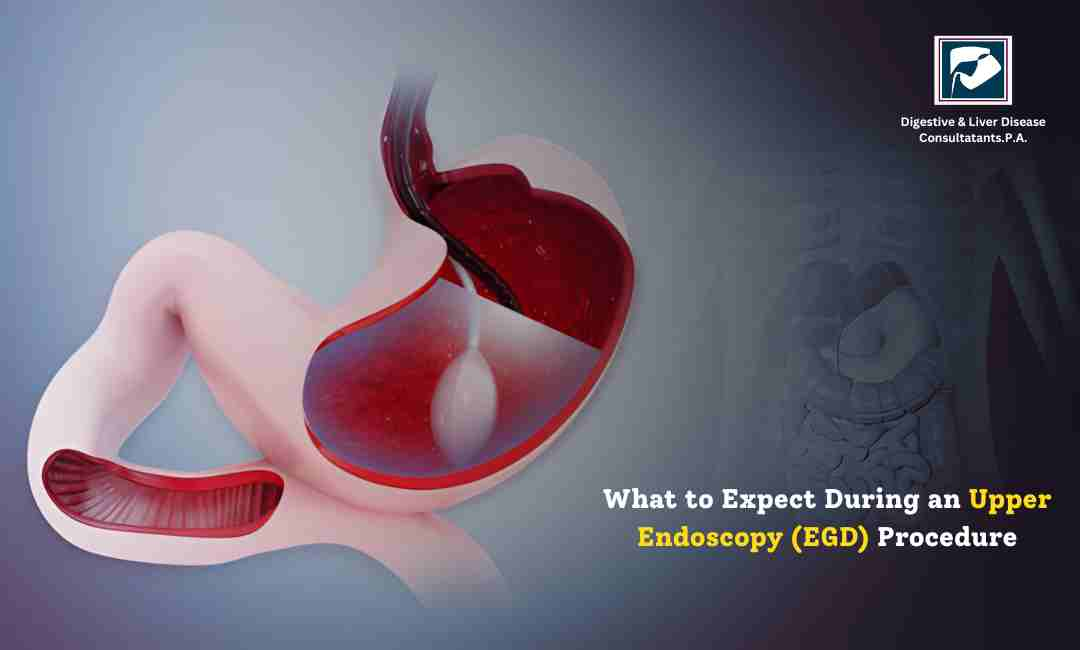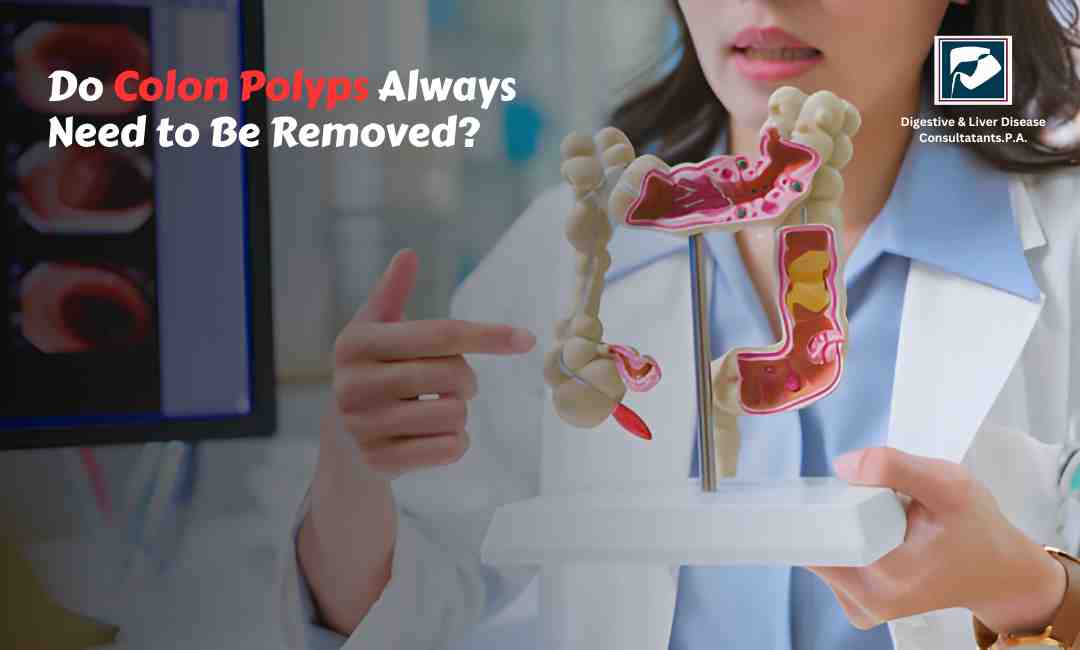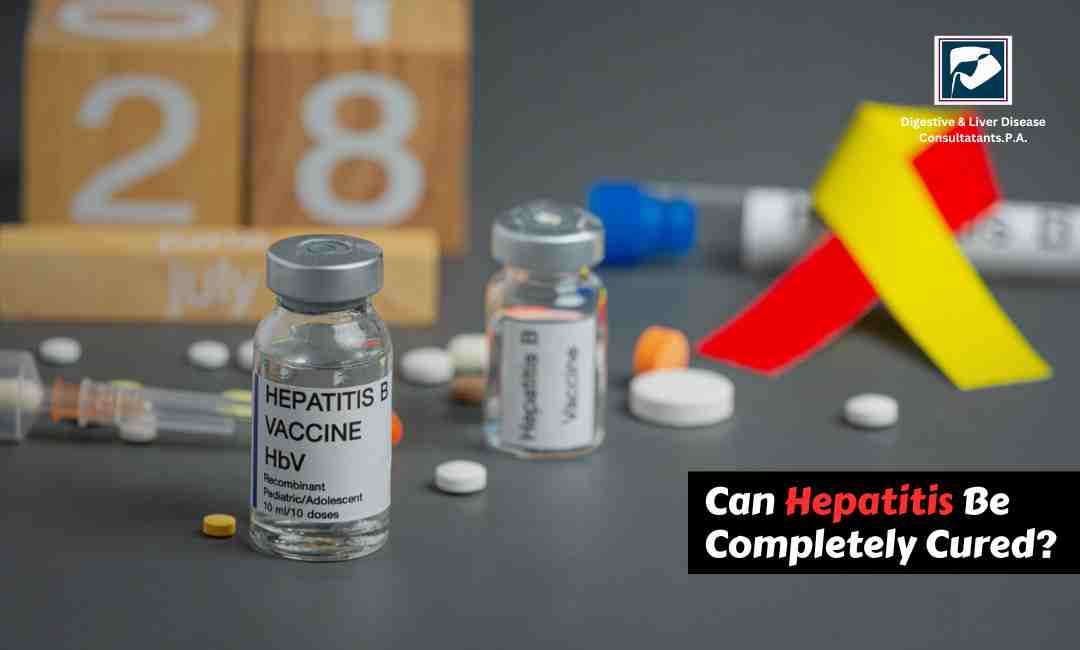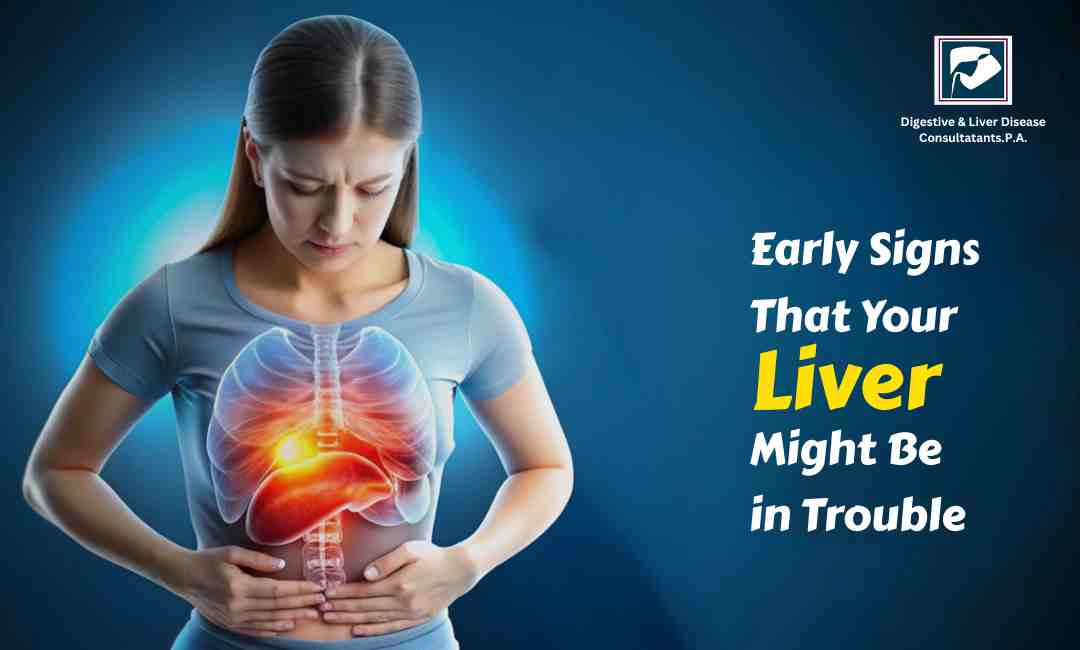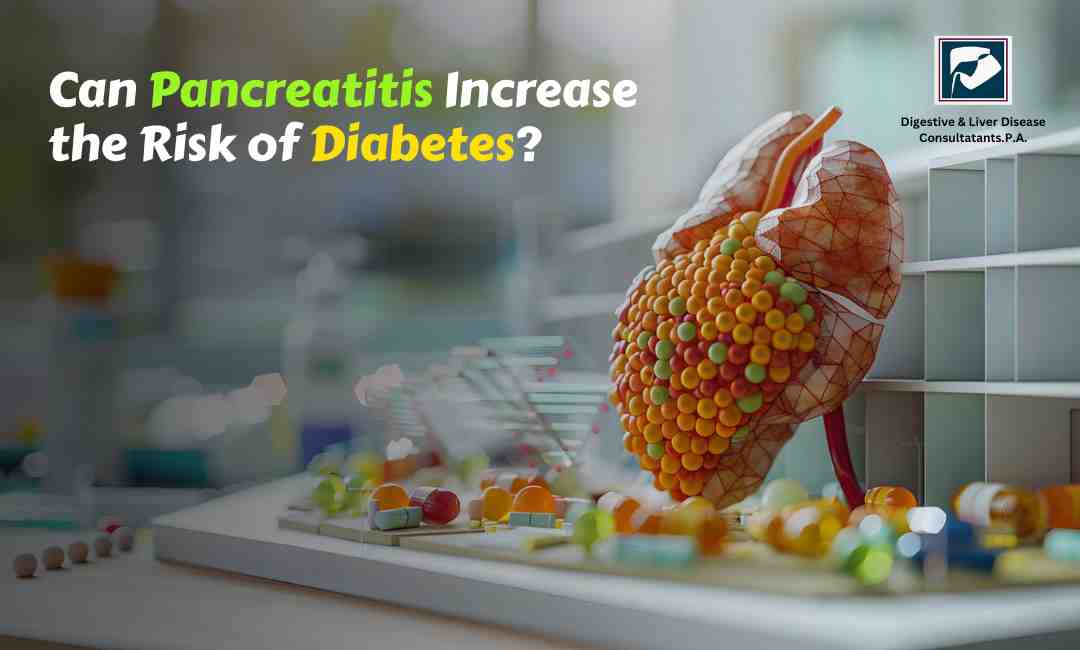If your doctor has recommended an upper endoscopy, also called an esophagogastroduodenoscopy (EGD), you might be feeling a bit nervous or unsure about what to expect. Don’t worry, this is a common and safe procedure that helps gastroenterologists look closely at your esophagus, stomach, and upper part of the small intestine (duodenum) to diagnose and treat digestive issues.
At Digestive & Liver Disease Consultants, P.A. (DLDC), our experienced gastroenterologists perform upper endoscopies using advanced technology and patient-centered care to ensure comfort, safety, and accurate diagnosis. Here’s a detailed guide to help you understand what happens before, during, and after your EGD procedure.
What is an Upper Endoscopy (EGD)?
An upper endoscopy (EGD) is a minimally invasive procedure that uses a thin, flexible tube with a camera called an endoscope. This tool allows your gastroenterologist to see inside your upper digestive tract in real time. It helps identify problems such as:
- Heartburn or acid reflux (GERD)
- Ulcers
- Gastrointestinal bleeding
- Difficulty swallowing (dysphagia)
- Celiac disease or inflammation
- Abnormal growths or polyps
Because the camera provides a clear view, your doctor can often diagnose the cause of symptoms like persistent nausea, abdominal pain, or unexplained weight loss with great accuracy.

Why You Might Need an Upper Endoscopy
Your doctor may recommend an EGD if you are experiencing:
- Chronic acid reflux or heartburn
- Upper abdominal pain or bloating
- Difficulty swallowing or food getting stuck
- Unexplained vomiting or bleeding
- Suspected ulcers or stomach infection
An upper endoscopy is also useful for monitoring existing conditions, such as Barrett’s esophagus or gastritis, and for collecting tissue samples (biopsies) for lab testing.
Preparing for the Procedure
Preparation is simple but very important. To ensure a clear view and accurate results, your stomach must be empty before the procedure. Typically, your doctor will ask you to:
- Avoid eating or drinking for 6–8 hours before your appointment
- Stop certain medications (like blood thinners or diabetes medicines) as advised
- Arrange a ride home, since you will receive sedation
You should also inform your gastroenterologist about any allergies, medical conditions, or previous reactions to anesthesia.
At DLDC, our care team provides clear, personalized instructions before your procedure so you feel confident and well-prepared.
What Happens During an Upper Endoscopy
Here’s a step-by-step look at what you can expect:
1. Arrival and Preparation
When you arrive, you’ll be checked in and guided to the endoscopy area. A nurse will review your medical history, insert an IV line, and monitor your vital signs throughout the procedure.
2. Sedation
Most patients receive a light sedative through the IV to help them relax and stay comfortable. You will be sleepy but able to breathe on your own.
3. The Procedure
Once you are relaxed, your doctor will gently insert the endoscope through your mouth and guide it down your throat. The camera transmits live images to a monitor, allowing your gastroenterologist to examine your esophagus, stomach, and duodenum.
If necessary, the doctor may take small tissue samples (biopsies) or remove polyps during the procedure. These steps are painless and take just a few minutes.
4. Duration
The entire procedure usually lasts 15–30 minutes, depending on what your doctor needs to evaluate.
Is Upper Endoscopy Painful?
Most patients report little to no pain during an EGD. Thanks to the sedative, you’ll likely feel relaxed and may not even remember the procedure afterward. Some people experience mild sore throat, bloating, or gas for a few hours, which is completely normal and resolves quickly.
At Digestive & Liver Disease Consultants, P.A., patient comfort and safety are top priorities. Our expert team ensures that every step of your endoscopy experience is as smooth and stress-free as possible.
After the Procedure
After your EGD, you’ll spend about 30–60 minutes in a recovery area while the sedation wears off. Once you’re fully awake, your doctor will discuss the findings with you and explain any next steps.
Post-procedure tips:
- Avoid driving or operating machinery for the rest of the day
- Start with light meals and drink plenty of fluids
- Expect minor bloating or a mild sore throat, which usually fades within 24 hours
If biopsies were taken, your doctor will review the results with you during a follow-up visit.
Possible Risks
Upper endoscopy is generally very safe. Complications are rare but may include:
- Mild bleeding (especially if a biopsy or polyp removal is done)
- Reaction to sedatives
- Very rare chance of infection or perforation
Your doctor will explain all risks and take precautions to minimize them.
Recovery and Results
Most patients can return to normal activities the next day. Your gastroenterologist will share your results and recommend any necessary treatments or lifestyle changes based on the findings.
If your EGD shows conditions like GERD, ulcers, or inflammation, your doctor may prescribe medications or suggest dietary modifications to improve digestive health.
Why Choose Digestive & Liver Disease Consultants, P.A.
At Digestive & Liver Disease Consultants, P.A., we combine advanced diagnostic tools with compassionate, personalized care. Our board-certified gastroenterologists have extensive experience performing upper endoscopies and other minimally invasive digestive procedures.
We focus on:
- Accurate diagnosis and tailored treatment plans
- State-of-the-art technology for precise results
- Comfortable and safe patient experience
- Comprehensive digestive and liver care under one roof
Whether you’re dealing with chronic acid reflux, unexplained stomach pain, or other digestive symptoms, our specialists provide the expert evaluation and care you deserve.
Conclusion
An upper endoscopy (EGD) is a safe, quick, and effective way to understand what’s happening inside your upper digestive tract. Knowing what to expect before, during, and after the procedure can help you feel more relaxed and confident about the process.
If you are struggling with persistent digestive symptoms such as heartburn, nausea, or difficulty swallowing, don’t ignore them. Early diagnosis can prevent serious complications and improve your quality of life.
Schedule an appointment with the experienced gastroenterologists at Digestive & Liver Disease Consultants, P.A. today.
Your digestive health matters, and we’re here to help you every step of the way.

